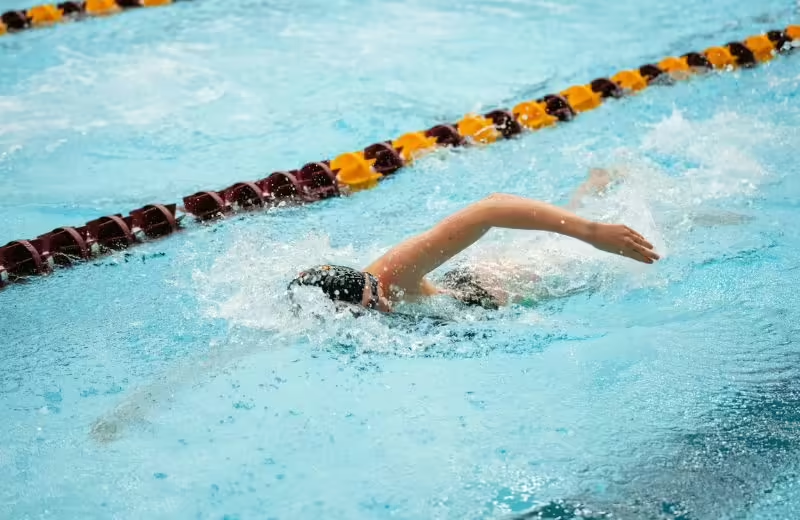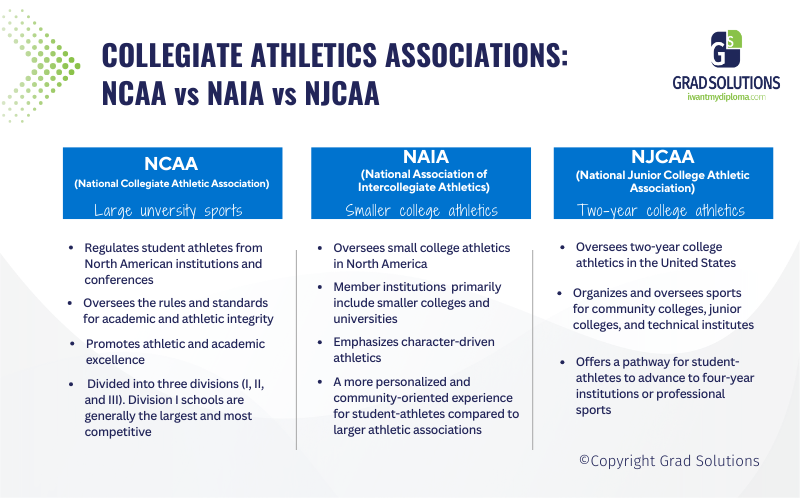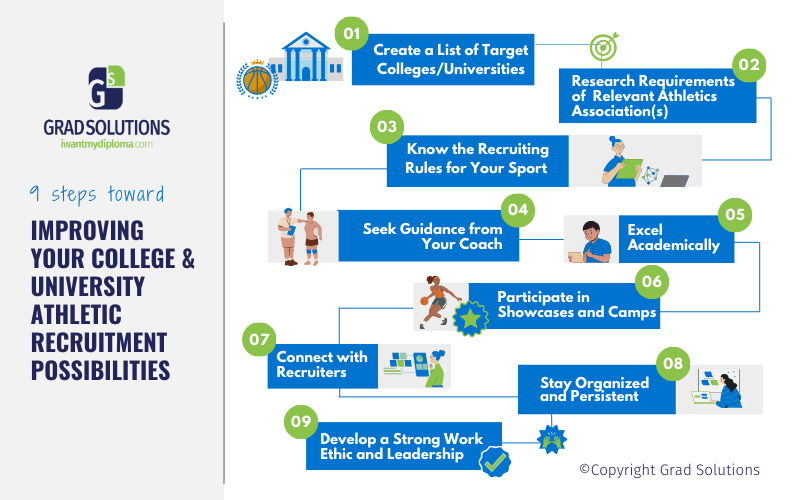Online School
A Game Plan for Online High School Success: How to Unlock College Athletic Opportunities

An online high school diploma program like Grad Solutions can seem attractive for high school athletes who travel or are deeply involved in sports. Its flexibility is advantageous because it allows student-athletes to balance their training schedules and academic responsibilities more effectively. The ability to tailor schedules can lead to more focused and intense training periods, potentially enhancing their athletic performance.
However, enrolling in an online high school can significantly impact a student’s chances of getting into a college athletics program in multiple ways. Not all online high school programs are the same. Prospective student-athletes must know the eligibility factors. They need to be sure their high school education will not affect or prevent them from having a college or university athletic career.

Those who want to enroll in college or university sports must know the many factors affecting their eligibility. For example, students interested in an online diploma program like Grad Solutions should be aware that the program does not qualify for NCAA consideration.
Hidden Factors Impacting High School Athletes’ Collegiate Sports Recruiting Eligibility
While athletic ability clearly impacts a student’s odds of being recruited, some less obvious factors that could affect or disqualify them from being recruited are their high school’s approved courses, GPA, and standardized test scores. However, these factors are different for each athletics association and division. Here’s a more detailed look at what that means:
Academic Rigor and Course Approval
Specifically, NCAA Division I and II require student-athletes to complete specific core courses, which must be approved by the NCAA for them to qualify. Students and parents should check the NCAA’s list of approved courses to ensure their high school offers the necessary courses. Grad Solution’s online program is not approved by the NCAA and does not meet these requirements.

You can check if collegiate athletics associations will accept a student’s coursework by checking their websites:
GPA, Standardized Test Scores, and Class Rank
The NAIA has no core course requirements, but prospective NAIA student-athletes should double-check their eligibility regularly. High school grades and GPA are often considered for NAIA potential athletes. Occasionally, SAT/ACT scores, class rank, and dual credit attained are also considered.
NCAA Division I and II do not look at standardized test scores for eligibility but do highly consider the grade-point average (GPA) based on the grades you earn in NCAA-approved core courses. Students planning to attend a NCAA Division III school are not required to have an academic certification from the Eligibility Center but may be required to have an amateurism certification.
Meanwhile, the NJCCA requires students to graduate from a high school with an academic diploma, general education diploma, or a state Department of Education-approved high school equivalency test. With NJCAA, the prospective school is responsible for verifying a student-athlete’s eligibility, so those students are encouraged to connect with the school directly.
Steps High School Students Can Take to Improve Their College Athletic Recruitment Prospects
The journey to securing a spot in a college athletic program is challenging and rewarding, requiring a combination of talent, dedication, and strategic planning. High school student-athletes who aspire to compete at the collegiate level must take proactive steps to enhance their recruitment prospects.

Here are several key strategies to help high school athletes stand out and attract the attention of college coaches:
Step One: Create a List of Potential Colleges/Universities
There are several collegiate athletics associations and divisions that exist. The one you associate with is based on the specific school you will attend. Knowing which college/university athletics program you would like to be recruited for is the first and most critical step to ensuring you will meet the requirements of that school’s athletics program.
Identify colleges that offer athletic programs aligned with your skill level and academic interests. Consider factors such as the athletic program’s competitiveness, size and location, and available educational programs. Create a list of target schools in NCAA Divisions I, II, and III, as well as NAIA and junior colleges you’d like to consider.
Step Two: Research Requirements of Each Athletics Association
Once you know which colleges or universities you might like to attend, finding out which collegiate athletics association is associated with that college/university is the next important step. According to NCSA, a reputable college athletic recruiting platform, it’s never too early to research your collegiate athletics options.
The three athletic associations that regulate colleges and universities are:
- NCAA (National Collegiate Athletic Association)
- NAIA (National Association of Intercollegiate Athletics)
- NJCAA (National Junior College Athletic Association)
Some of these have multiple divisions, each with different requirements. The NCAA and the NAIA both have eligibility centers where you can create an account and check your future eligibility status as early as your first year in high school. Register with the NCSA or NCAA here.
There you can familiarize yourself with the core course requirements, GPA standards, and standardized test score thresholds for eligibility.
Next, you must ensure that your high school courses align with these requirements and regularly check your eligibility status. Not all high school courses are accepted by the NCAA, NAIA, or NJCAA. Grad Solutions course content, for example, is not accepted by the NCAA. It is recommended that student-athletes who want to get into an NCAA sport consider an online program like ASU Prep Digital.
Step Three: Know the Recruiting Rules for Your Sport
In addition to determining the eligibility requirements for your potential college/university, you must know the recruiting rules for your sport. Each sport has different methods and procedures for recruiting. Talk to your coach about what their experience has been. They are likely to have helpful information on the recruiting process.
Step Four: Seek Guidance from Your High School or Club Sport Coach
Your high school or club sports coach can be a valuable resource in the recruitment process. They can provide honest assessments of your abilities, recommend colleges that suit your skill level, and serve as a reference for college coaches. You might also ask for their assistance contacting college programs and preparing for recruitment events.
Step Five: Excel Academically

Academic performance is critical in the recruitment process. College coaches seek well-rounded individuals who can balance the demands of both academics and athletics. Maintain a strong GPA, enroll in challenging courses, and prepare thoroughly for standardized tests like the SAT or ACT. A solid academic record makes you eligible for athletic programs and increases your chances of receiving larger scholarships. Students who receive partial athletics scholarships can supplement their tuition with academic scholarships, therefore covering more of their tuition costs.
Step Six: Participate in Showcases and Camps
Attending showcases, camps, and tournaments is essential for gaining exposure to college scouts. These events provide opportunities to demonstrate your skills in a competitive environment and to interact with college coaches. Choose events that are well-attended by college recruiters and align with your target schools.
Step Seven: Connect with Recruiters
Use online platforms to share your accomplishments and professionally interact with coaches and other recruits. You can create profiles on recruitment websites such as NCSA (Next College Student Athlete) or SportsRecruits, where coaches actively search for potential recruits. Keep your profile updated with your latest statistics, achievements, and highlight reels.
Step Eight: Develop a Strong Work Ethic and Leadership Skills
College coaches look for athletes who demonstrate dedication, a strong work ethic, and leadership qualities. Show your commitment through consistent training, sports improvement, and team activity involvement. Take on leadership roles within your team to exhibit your ability to lead and motivate others.
Step Nine: Stay Organized and Persistent
The recruitment process can be long and complex. Keep track of your communications with coaches, application deadlines, and recruitment events. Stay organized and follow up on all inquiries and opportunities. Persistence and a positive attitude can set you apart from other recruits.
Improving your college athletic recruitment prospects involves continuous athletic performance improvement, research, academic excellence, athletic prowess, strategic planning, and effective communication. By taking proactive steps, high school student-athletes can enhance their visibility, demonstrate their commitment, and ultimately secure opportunities to compete at the collegiate level.
Again, it’s never too early to learn the recruitment requirements at the college or university level. By building a deep understanding of what colleges and universities are looking for, you can ensure that your high school experience increases your chances of being recruited. Remember, the journey requires perseverance, dedication, and a clear understanding of your aspirations.
If you would like to know more about our program, feel free to call us at 480-689-5999, contact us, or enroll online!
Sources
National Association of Intercollegiate Athletics